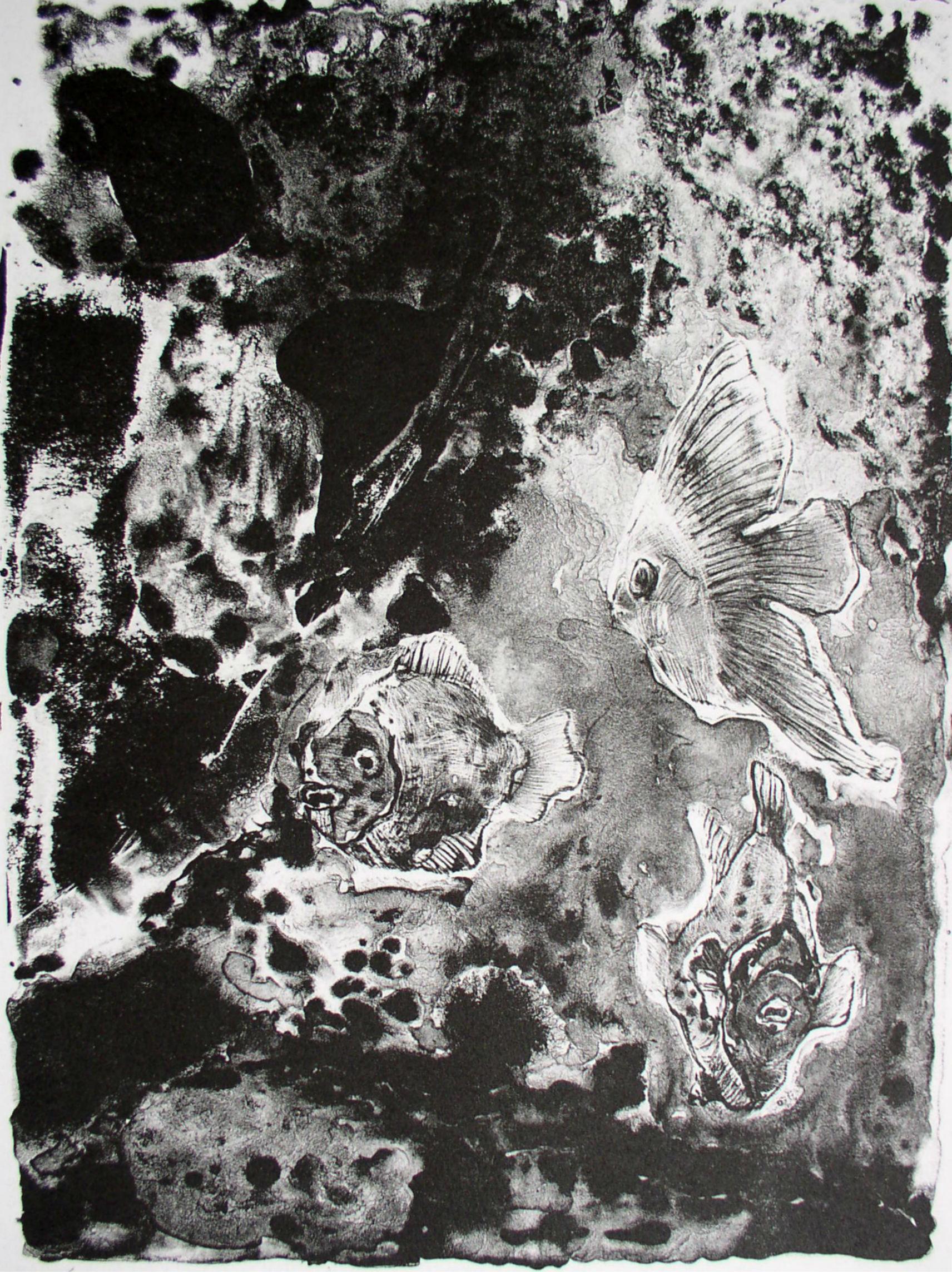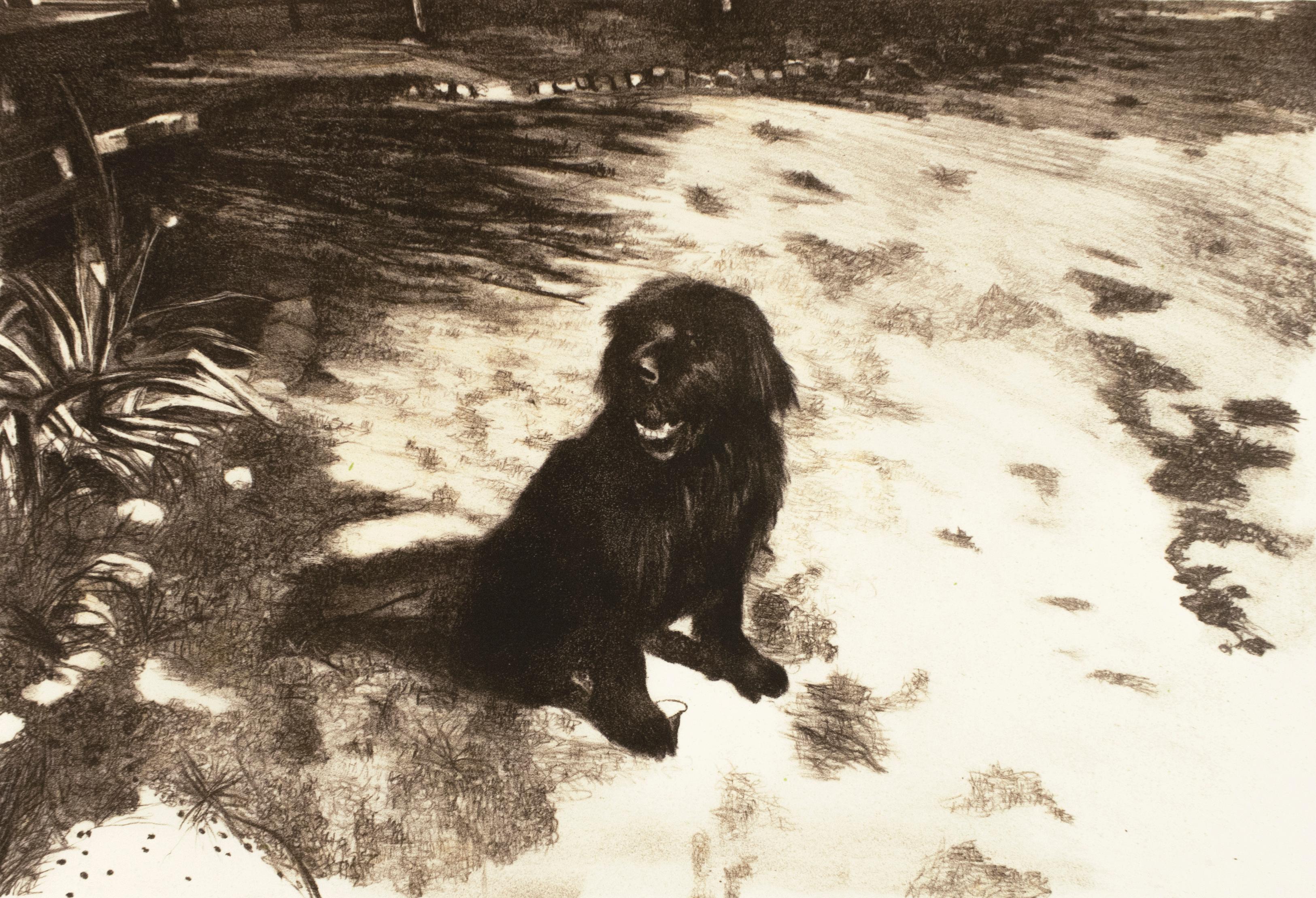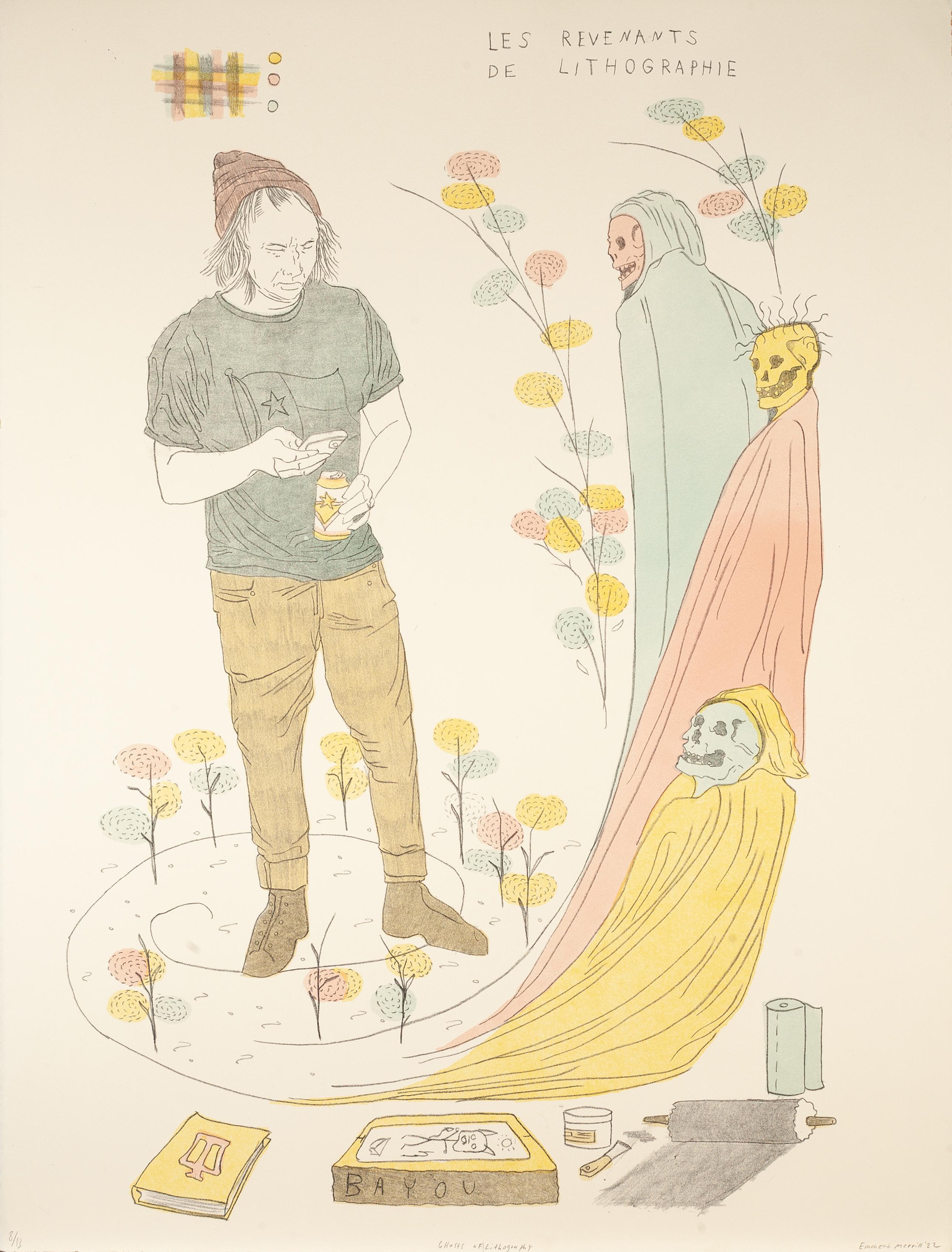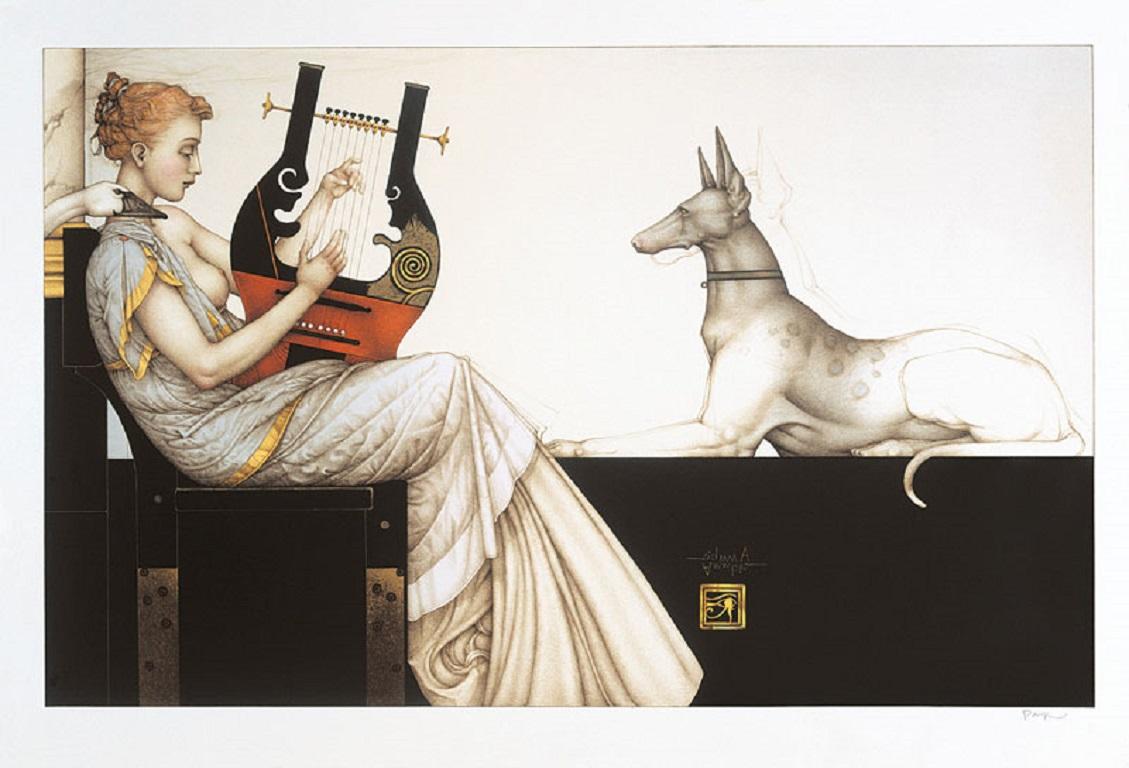Items Similar to Jules Pascin - Little Red Riding Hood - Original Lithograph
Want more images or videos?
Request additional images or videos from the seller
1 of 8
Jules PascinJules Pascin - Little Red Riding Hood - Original Lithograph1938
1938
About the Item
Jules Pascin - Little Red Riding Hood - Original Lithograph
Conditions: excellent
32 x 24 cm
1938
From the art review XXe siècle, San Lazzaro
Unsigned and unumbered as issued
- Creator:Jules Pascin (1885-1930, Bulgarian, French)
- Creation Year:1938
- Dimensions:Height: 12.6 in (32 cm)Width: 9.45 in (24 cm)Depth: 0.04 in (1 mm)
- Medium:
- Movement & Style:
- Period:
- Condition:
- Gallery Location:Collonge Bellerive, Geneve, CH
- Reference Number:1stDibs: LU16124454272
About the Seller
4.9
Gold Seller
These expertly vetted sellers are highly rated and consistently exceed customer expectations.
Established in 2015
1stDibs seller since 2015
908 sales on 1stDibs
Typical response time: 2 hours
- ShippingRetrieving quote...Ships From: Collonge Bellerive, Geneve, Switzerland
- Return PolicyA return for this item may be initiated within 7 days of delivery.
More From This SellerView All
- Gustave Singier - Abstract Fish - Original LithographBy Gustave SingierLocated in Collonge Bellerive, Geneve, CHGustave Singier - Abstract Fish - Original Lithograph Conditions: excellent 32 x 24 cm 1955 From XXe siècle, San Lazzaro Unsigned and unumbered as issuedCategory
1950s Contemporary Animal Prints
MaterialsLithograph
- Marc Chagall - Couple With a Goat - Original LithographBy Marc ChagallLocated in Collonge Bellerive, Geneve, CHMarc Chagall Original Lithograph Title: Couple With a Goat 1970 Dimensions: 32 x 24 cm From the art revue XXè siècle Reference: Mourlot #608 Unsigned and unumbered as issuedCategory
Mid-20th Century Surrealist Figurative Prints
MaterialsLithograph
- After Georges Braque - Antiborée - LithographLocated in Collonge Bellerive, Geneve, CHLithograph after Georges Braque. Signed in the plate Edition of 150 Dimensions: 76 x 117 cm Bibliography: « Les Métamorphoses de Braque» of Heger de Loewenfeld and Raphaël de Cuttoli , Editions FAC, Paris, 1989. In 1961 Georges Braque decided with his laidary friend Heger de Loewenfeld to pick up certain of his works to in order to create artworks, this beautiful litograph is one of them. Héméra in the Mythology: In Greek mythology Hemera was the personification of day and one of the Greek primordial deities. She is the goddess of the daytime and, according to Hesiod, the daughter of Erebus and Nyx (the goddess of night). Hemera is remarked upon in Cicero's De Natura Deorum, where it is logically determined that Dies (Hemera) must be a god, if Uranus is a god. The poet Bacchylides states that Nyx and Chronos are the parents, but Hyginus in his preface to the Fabulae mentions Chaos as the mother/father and Nyx as her sister. She was the female counterpart of her brother and consort, Aether (Light), but neither of them figured actively in myth or cult. Hyginus lists their children as Uranus, Gaia, and Thalassa (the primordial sea goddess), while Hesiod only lists Thalassa as their child. The father of Cubism Three Cubist that distinguishes art historian periods were initiated and developed by Georges Braque: The Cubist Cézanne (1907-1909), Executive (1909-1912) and synthetic (1912-1922). Post-Impressionist and fawn, Braque no longer adheres to the contingency of a decorative way or the other. Cézanne’s paintings exhibited at the Grand Palais during the retrospective of 1907 are a revelation: Cézanne sought and invented a pictorial language. In his footsteps, Braque went to the South with the reasons of the Master. He returned with Estaque landscapes and surprising Ciotat it keeps Cezanne geometric model and retains the “passages” continuity from one surface to another to create the sensation of “turning around” of the object represented. But he wants to go after the consequences of the vision of Cezanne. In his paintings Houses in L’Estaque (1908) it simplifies the volumes of houses, neglects detail by removing doors and windows: the plastic rhythm that builds the table. Large Nude , a masterpiece of the period, can be considered the first work of Cézanne cubism . Systematizing and deepening Braque discoveries open the door analytical cubism. In 1909, his painting became more cerebral than sensual. The pattern is recreated in the two-dimensionality of the canvas, leaving aside any illusionistic perspective. In Still Life with Violin, objects are analyzed facets according to their characteristic elements, each facet referring to a particular view of the object. There are so many facets of points selected view: Table reflects the knowledge of the object and the ubiquity of the eye. Moreover, Braque is looking for the essence of the objects in the world rather than their contingency, which explains the absence of light source and use of muted colors (gray, ocher), contingent aspects of the object . But formal logic has stepped facets, erased any anecdote to the object and ultimately led to his painting a hermetic more marked on the edge of abstraction (see the series of Castle Roche-Guyon ). Braque, anxious to keep the concrete and refusing at all costs that the logic of Cubism takes the paintings to abstract, reintroduced signs of reality in his paintings in 1912 marks the beginning of Synthetic Cubism. Historians speak of “signs of real” rather than reality because what interests Braque, this is not to put reality into a table, but to create a painting which, by its language, refers to the real. To do this, he invented two major techniques XX th century inclusions and contributions. The inclusions consist of painting objects that have no real depth, materials (wallpaper in Nature morte aux playing cards faux wood is a pictorial inclusion) or letters (calligraphic inclusion in Portuguese ), made first brush and a few months later stencil. Contributions are defined in contrast with the collage on canvas of foreign materials: glued or sand paper, sawdust, etc.. Regarding the collages, Braque used for the first time in September 1912 a piece of adhesive paper imitating faux wood Compote...Category
1950s Cubist Animal Prints
MaterialsLithograph
- Marc Chagall - The Green Horse - Original LithographBy Marc ChagallLocated in Collonge Bellerive, Geneve, CHMarc Chagall Original Lithograph Title: The Green Horse 1973 Dimensions: 33 x 50 cm Reference: This lithograph was created for the portfolio "Chagall Monu...Category
1970s Surrealist Figurative Prints
MaterialsLithograph
- Jean Arp - Original LithographBy Jean ArpLocated in Collonge Bellerive, Geneve, CHJean Arp - Original Lithograph 1962 Dimensions: 32 x 24 cm From the art review XXe siècle Unsigned and unumbered as issuedCategory
1960s Surrealist Animal Prints
MaterialsLithograph
- Pablo Picasso - La Petite Corrida - Original LithographBy Pablo PicassoLocated in Collonge Bellerive, Geneve, CHPablo Picasso - Original Lithograph La Petite Corrida (The Small Bullfight) 1958 Edition of 2000, unsigned Published in the journal XXe Siecle Dimens...Category
1950s Modern Figurative Prints
MaterialsLithograph
You May Also Like
- Flamingo - Lithograph by Alberto Mastroianni - 1970sBy Alberto MastroianniLocated in Roma, ITFlamingo is a lithograph realized by Alberto Mastroianni in the 1970s. Hand Signed on the lower right margin. Numbered on the lower in pencil. . The artwork represents an interesti...Category
1970s Contemporary Figurative Prints
MaterialsLithograph, Paper
- Monkey - Lithograph by Alberto Mastroianni - 1970 ca.By Alberto MastroianniLocated in Roma, ITHand Signed. Edition 25/150 prints. Very good conditions.Category
1970s Contemporary Animal Prints
MaterialsLithograph
- David Shrigley, I Hate Human Beings - Contemporary Pop Art, Signed PrintBy David ShrigleyLocated in Hamburg, DEDavid Shrigley (British, b. 1968) I Hate Human Beings, 2021 Medium: Screenprint in colours, on wove paper Dimensions: 76 x 56 cm (29.9 x 22 in) Edition of 125: Hand signed and number...Category
21st Century and Contemporary Contemporary Figurative Prints
MaterialsLithograph, Screen
- Flamingo - Lithograph by Alberto Mastroianni - 1970sBy Alberto MastroianniLocated in Roma, ITHand Signed. Edition of 150 pieces plus 30 pieces in Roman Numbers.Category
1970s Contemporary Figurative Prints
MaterialsLithograph, Paper
- Flamingo - Lithograph by Alberto Mastroianni - 1970sBy Alberto MastroianniLocated in Roma, ITFlamingo is a lithograph realized by Alberto Mastroianni in the 1970s. Hand Signed on the lower right margin. Numbered on the lower in pencil. The artwork represents an interesting...Category
1970s Contemporary Figurative Prints
MaterialsLithograph, Paper
- Girafe - Lithograph by Alberto Mastroianni - 1970sBy Alberto MastroianniLocated in Roma, ITGirafe is a lithograph realized by Alberto Mastroianni in the 1970s. Hand Signed on the lower right margin. Numbered on the lower margin in pencil. . The artwork represents an inte...Category
1970s Contemporary Figurative Prints
MaterialsLithograph, Paper
Recently Viewed
View AllMore Ways To Browse
Pascin Jules
Little Red Riding Hood
Red Riding Hood Vintage
Little Red Riding Hood Vintage
Elephant Folio
Miro Animals Print
Michael Fish
George Rodrigue Yellow
John Audubon First Edition
Wildlife Lithographs
Alaska Watercolor
Butterfly Etching
Framed Audubon Prints
Les Fables De La Fontaine
Banksy Note
Vintage Circus Animals
Botanical And Animal Prints
Hunt Slonem Bunny Print





